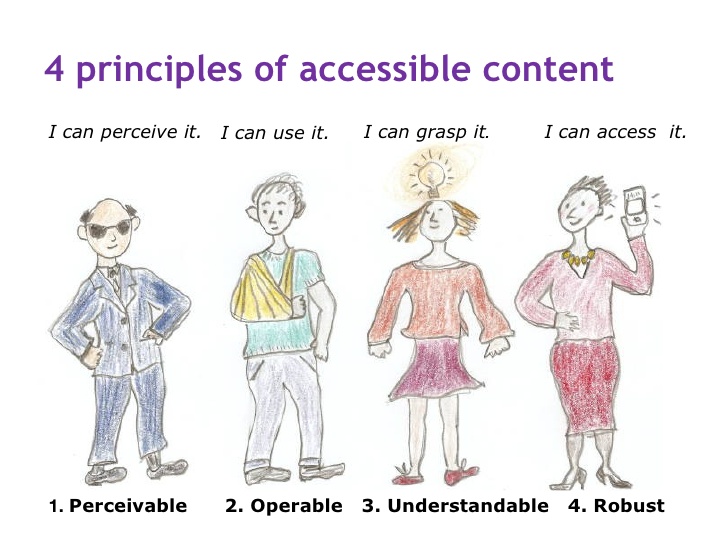
Ashley Fruechting is Sr. Director of Marketing & Strategic Partnerships for Santa Monica, Calif.-based Vision Internet, a leader in government website development with more than 600 government, non-profit and education clients across the U.S. and Canada.
By Ashley Fruechting – LinkedIn and Twitter
 Everyone in local government knows that accessibility laws are important to consider when planning everything from a shopping district to an election. But when was the last time you took a look at the accessibility of your website? With laws changing and Department of Justice settlements increasing, it may be time to give your site a second look.
Everyone in local government knows that accessibility laws are important to consider when planning everything from a shopping district to an election. But when was the last time you took a look at the accessibility of your website? With laws changing and Department of Justice settlements increasing, it may be time to give your site a second look.
The good news is, if your site was created by one of the top local government content management system (CMS) providers like Vision, you’ve already got many of the tools to become compliant. Some of these basic requirements include the ability to navigate a website without a mouse, the use of alt tags to describe images, and the use of header tags to help users navigate content. Though these features are built into the CMS, compliance with accessibility also relies on your web content developers and editors knowing how to create and maintain accessible content. Let’s walk through a brief overview of what you need to know, and next steps to take.
History Lesson
In order to ensure that all citizens have equal access, the Department of Justice’s (DoJ) Civil Rights Division began reviewing local and state governments in 1999 to help them begin to come into full compliance with the requirements of Title II of the Americans with Disability Act (ADA). Title II prohibits discrimination to all services, programs and activities of state and local governments regardless of whether they receive Federal financial assistance.
Over the last 15 years, the DoJ has conducted accessibility reviews at more than 200 locations. While most of the DoJ reviews focus on modifications to physical facilities, polling places and law enforcement services, websites and web-based services have also come under direct scrutiny. You can discover more background information about the DoJ review project, also called Project Access, in the Project Civic Access Fact Sheet along with a list of the government agencies that have entered into settlement agreements with the DoJ.
A Change in Standards, a Change in Mindset
In the past year, the number of DoJ settlements has accelerated, which means that the DoJ is getting serious about accessibility. The agreements state that websites and web services must become compliant with the accessibility standards known as WCAG 2.0, and that they must adopt policies and procedures to maintain accessibility for all current and future content on their websites.
WCAG 2.0 was developed by the World Wide Web Consortium (W3C), an international community focused on open standards for the Web, and is as much a new way of thinking as it is a list of guidelines. If you’re not familiar with WCAG 2.0, here is how W3C describes it (see the original version on the W3C website).
Website copy must be:
Perceivable
- Provide text alternatives for non-text content.
- Provide captions and other alternatives for multimedia.
- Create content that can be presented in different ways, including by assistive technologies, without losing meaning.
- Make it easier for users to see and hear content.
Operable
- Make all functionality available from a keyboard.
- Give users enough time to read and use content.
- Do not use content that causes seizures.
- Help users navigate and find content.
Understandable
- Make text readable and understandable.
- Make content appear and operate in predictable ways.
- Help users avoid and correct mistakes.
Robust
- Maximize compatibility with current and future user tools.
DoJ Guidelines
While WCAG 2.0 describes the usability goals, the DoJ expects organizations to create infrastructure to maintain these standards, and personnel to support and communicate the standards.
The process of becoming compliant can take some time and certainly requires a commitment by your organization to keep accessibility a priority. If you’re just getting started, here are some suggested roles and processes based on recent settlement agreements, to help improve your organization’s compliance with DoJ expectations:
- Website accessibility coordinator – you will need to name or hire a web accessibility coordinator who understands Title II of ADA, WCAG 2.0 and website accessibility
- Accessibility policy – you will need to adopt, post and share an accessibility policy annually
- Website accessibility notices – you will need notices to instruct visitors on how to request accessible information and how to provide feedback on improving website accessibility
- Accessibility training – you will need to train your web content personnel on how to author accessible information
- Accessibility provisions in performance evaluations – you will need to add provisions that ensure accessibility of website and content into performance evaluations of anyone who creates content for the website
- Accessibility testing – you should be performing accessibility testing with automated tools and with individuals who have different disabilities (blind, deaf and unable to use mouse at a minimum)
- WCAG 2.0 compliance – check with your vendor or software provider to see if your underlying content management system is already WCAG 2.0 compliant
So What’s Next?
Everyone recognizes that becoming more accessible is a journey that takes time. Getting a small team up to speed on requirements and developing a plan can take your organization a long way towards being compliant.
This is the perfect time to start planning for accessibility improvements that you can make in the coming year. Vision can help – let us know if you’d like a free evaluation of your website.
